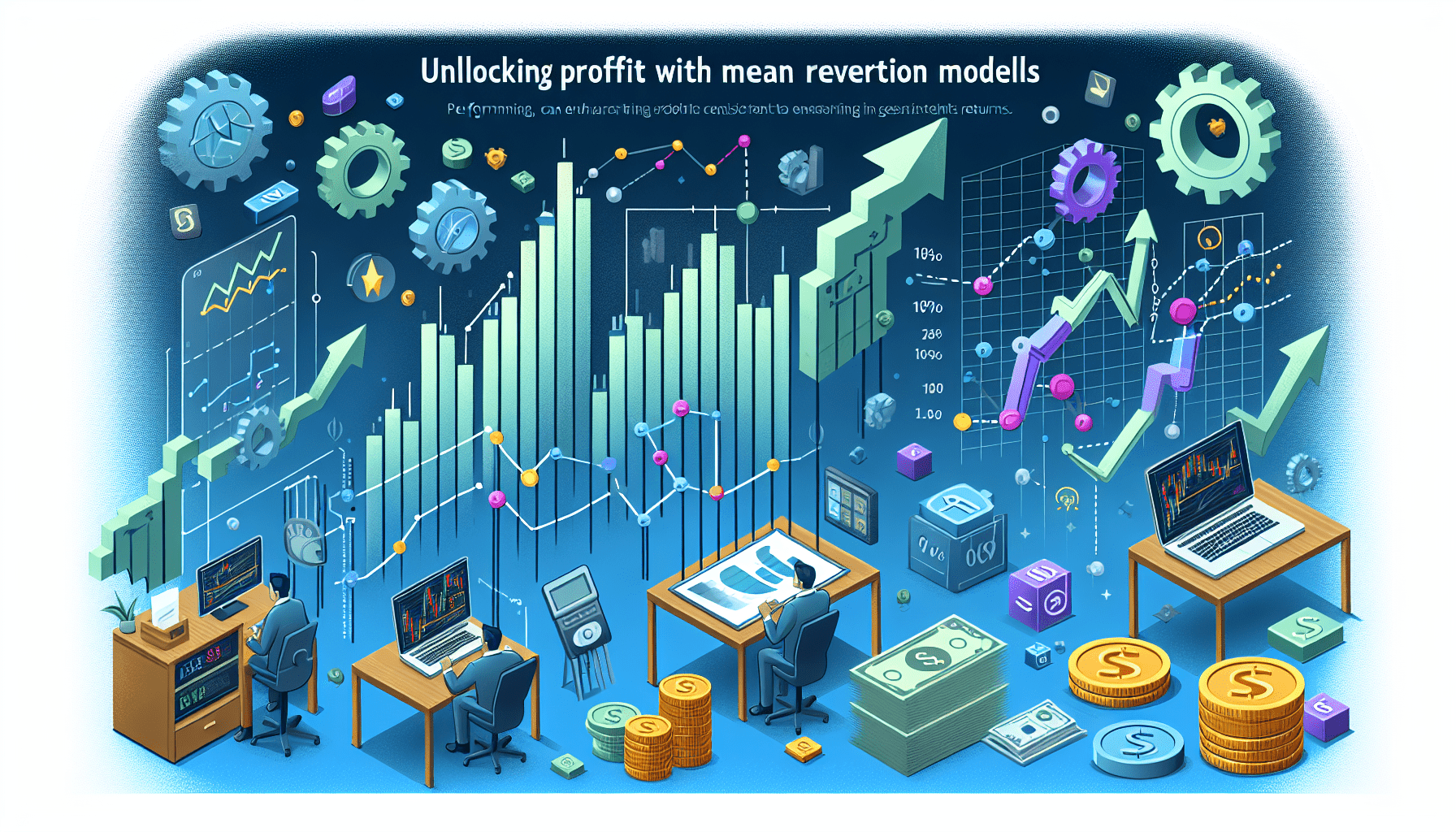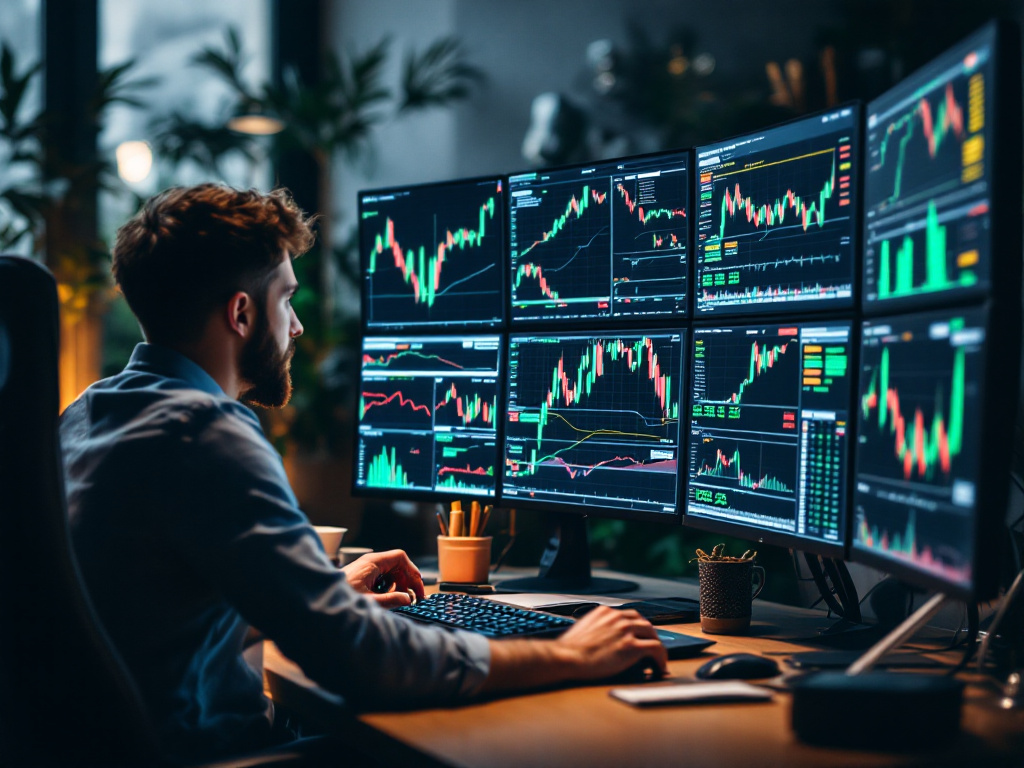Mean Reversion Models: Trading Secrets Revealed
In today’s ever-evolving financial markets, traders continually seek innovative techniques to gain an edge. One of the most intriguing approaches is the use of mean reversion models. These models, by predicting a return to an average price, offer traders a systematic way to capitalize on market fluctuations. Whether you are a seasoned investor or new to the trading world, understanding and implementing mean reversion trading strategies can offer a unique perspective on market behavior. In this blog, we will explore the fundamentals of mean reversion models, how to implement mean reversion strategies in trading, and why these models are becoming a cornerstone for many trading systems.
Understanding Mean Reversion
At its core, the concept of mean reversion is built on the assumption that asset prices tend to revert to their historical average over time. This is where the term “mean reversion models” originates. These models are employed across various markets including stocks, forex, and commodities to predict short-term corrections in trends. Investors and algorithmic traders have developed a myriad of mean reversion trading systems to take advantage of these temporary deviations. Whether you are interested in a simple mean reversion analysis or a more complex mean reversion algorithm, the principles remain the same: look for opportunities where price momentum temporarily strays from its long-term average and bet on a reversion.
Mean reversion trading strategies often utilize statistical methods to identify the threshold at which prices are considered overextended. This process involves continuous monitoring of price movements, volatility, and historical data. By setting parameters for what constitutes an outlier, traders can execute mean reversion trading systems that alert them to potential trade setups. These systems not only help in minimizing risks but also in capturing profitable opportunities during market retracements.
Key Components of Mean Reversion Models
Mean reversion models consist of several important components. Firstly, there is the historical price series, which serves as the basis for calculating the mean. Secondly, volatility is factored in to determine the standard deviation from the mean, thereby providing a buffer or threshold. Finally, traders set up automated alerts or trading signals based on these deviations. Many traders embrace the use of backtesting, implementing a mean reversion trading system with backtesting to simulate past market scenarios and refine their strategies.
The beauty of these models is in their versatility. For instance, if you are keen on implementing a mean reversion algorithm specifically for stock trading, you would focus on historical stock price movements and identify consistent patterns of reversion. Similarly, for forex trading, mean reversion models for forex trading incorporate currency pair volatilities to determine entry and exit points. Each application, whether it’s advanced mean reversion trading algorithms for a highly automated trading system or a simpler analysis for manual trading, is built upon the same underlying principle of returning to a statistical norm.
This image illustrates a typical mean reversion scenario where asset prices deviate sharply from their historical mean before correcting themselves. Whether you are new to mean reversion trading strategies or a veteran implementing a complex trading system, visual aids can significantly enhance your understanding of market behavior and the underlying mathematical principles.
Implementing Mean Reversion Strategies
Once you grasp the underlying theory, the natural progression is to implement these strategies in real-world trading. When considering questions such as how to implement mean reversion strategies in trading, it becomes essential to blend theoretical knowledge with practical application. Many trading platforms now offer backtesting tools which allow traders to run simulations using historical data. This provides a safe environment to tweak settings and perfect a mean reversion trading system without risking capital.
For traders focusing on best mean reversion models for stock trading, the process begins with selecting a robust analytical framework. This framework watches for deviations from the norm and creates trade signals when predefined thresholds are breached. Such an approach not only reduces the likelihood of false signals but also enhances the precision of entry and exit points. Furthermore, integrating risk management protocols alongside these strategies ensures that even in volatile market conditions, the risk remains controlled.
Moreover, the integration of advanced mean reversion trading algorithms has revolutionized the trading landscape. Automated systems can process vast amounts of data faster than any human trader, making it possible to quickly identify and execute opportunities. But beyond just the speed, these advanced algorithms continuously learn from market behavior, adjusting parameters in real-time to improve performance. With the growth of algorithmic trading, traders now have access to powerful tools that offer both reliability and agility.
Risk Management and Backtesting
Like any trading strategy, mean reversion models are not without their risks. Market anomalies, unexpected news, or extreme volatility can lead to scenarios where prices might not revert as anticipated. Thus, risk management is a critical aspect of any mean reversion trading strategy. Incorporating stop-loss orders, setting take-profit levels, and regularly reviewing the performance of your trading system are essential practices.
Backtesting remains one of the most valuable methods to validate a trading strategy. A mean reversion trading system with backtesting capability allows traders to analyze how their model would have performed in the past. This not only helps in refining the model but also in instilling confidence when deploying live funds. By comparing multiple strategies and tweaking parameters, traders can determine which mean reversion algorithm offers the best risk-to-reward ratio in real-time scenarios.
This second image provides additional insights into the practical application of mean reversion models. It visualizes the process of how prices diverge and then converge to the mean, offering traders a clear picture of market dynamics. By studying such charts, one can better understand the nuances of the strategy and adapt it to various market conditions.
Advanced Techniques and Future Trends
The evolution of mean reversion models doesn’t stop at basic analysis. With the advent of machine learning and artificial intelligence, advanced mean reversion trading algorithms are being developed that further refine prediction accuracy. These algorithms analyze a multitude of data points at lightning speed to detect subtle patterns invisible to the naked eye. As technology evolves, so too do the opportunities available to traders willing to invest in advanced analytics.
In addition, integrating mean reversion analysis with other trading strategies can yield synergistic benefits. For instance, combining momentum trading with a mean reversion approach can help traders capture short-term gains while still managing long-term risk. This hybrid strategy leverages the strengths of both systems, ensuring that a trader can benefit from trending markets as well as periods of market correction.
Practical Tips for Traders
For those interested in adopting mean reversion models, here are some practical tips:
- Start with Research: Understand the statistical basis behind mean reversion and review historical data to identify patterns.
- Use Backtesting: Always test your strategy on historical data with a mean reversion trading system with backtesting to gauge its viability.
- Integrate Risk Management: Protect your capital by setting stop-loss orders and determining appropriate risk levels before executing trades.
- Monitor Market Conditions: Stay updated with market news and events, as external factors can significantly affect asset prices.
- Continuous Learning: Markets evolve, and so should your model. Regularly update your approach based on real-world performance and feedback.
Incorporating these strategies, especially for those seeking the best mean reversion models for stock trading or forex trading, can significantly enhance one’s trading acumen. Remember, while the concept might appear straightforward, the true art of trading lies in meticulous planning, detailed analysis, and continuous adaptation to the ever-changing market dynamics.
Conclusion
Mean reversion models are powerful tools in the arsenal of modern traders. They offer clarity amid market volatility and help in formulating strategies that can navigate both trending and corrective market environments. Whether you are implementing a basic mean reversion algorithm or integrating advanced systems that employ machine learning, the core principle remains the same: markets oscillate, and buying the dip at the right time can lead to substantial gains.
By combining robust backtesting with disciplined risk management and integrating insights from mean reversion analysis, traders can craft strategies that are both adaptive and resilient. As you explore further into the world of mean reversion trading strategies, remember that every model has its nuances and that continuous learning and adaptation are key. With the right approach, mean reversion models can not only optimize your trading decisions but also pave the way for long-term success in the financial markets.
Embrace the journey of understanding and applying these models. With rigorous analysis, careful planning, and a willingness to adapt, you can transform market challenges into profitable opportunities. Happy trading!







